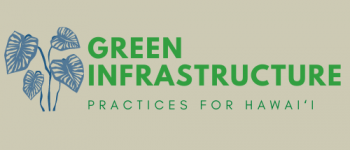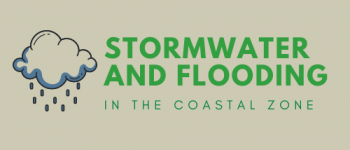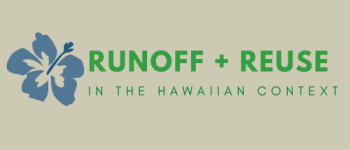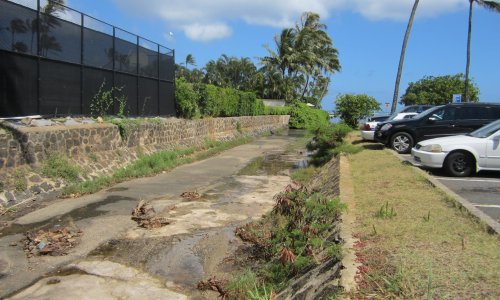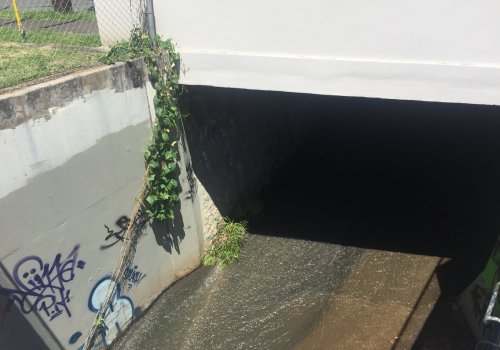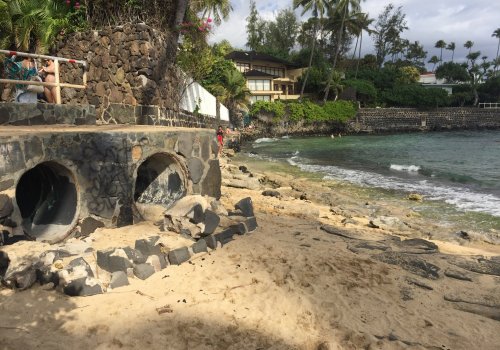Runoff + Reuse in the Hawaiian Context
As the development of Hawaiʻi’s urban and residential areas has increased, the land’s natural capacity to absorb rainwater and and filter pollutants has been diminished. The draining and filling of floodplains, including lowland wetlands and marshes, channelization and straightening of waterways, and development of homes and businesses immediately adjacent to streams and rivers has amplified the hazards of flash flooding and non-point source water contamination across the state. The use of green infrastructure seeks to reintroduce natural systems into our urban spaces, simultaneously enhancing ecosystems and their co-benefits, including flood mitigation and water filtration.
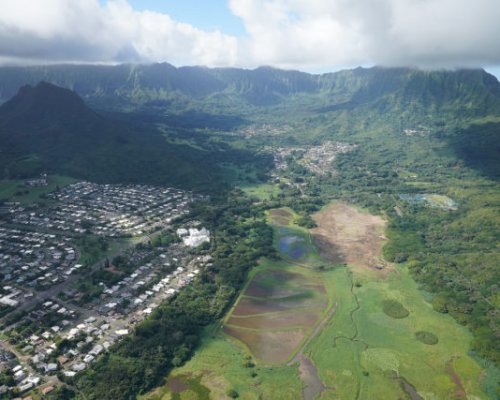
Runoff
Our current stormwater management system is based on the conveyance of stormwater away from residential and commercial areas and into storm drains, hardened channels, and underground culverts. These hard structures are known as grey infrastructure.
Rather than treating water as something to be disposed of quickly, green infrastructure seeks to replicate nature’s pace by slowing down and soaking in stormwater before it reaches the streams and the ocean. This process allows high-velocity flood waters to dissipate, sediment to settle out of the water column, and pollutants to be filtered prior to reaching sensitive habitat areas.
Green infrastructure is not intended to replace Hawaii’s grey infrastructure network, but it can serve a complementary role. By reducing the amount of runoff within the conventional storm drainage system, green infrastructure reduces volumetric stress placed on grey infrastructure during heavy rain events.
Reuse
Green infrastructure can capture and treat stormwater onsite for nonpotable reuse, such as garden watering. The ‘capture’ and reuse of water is especially important in Hawaii’s short, steep watersheds. During intense rainfall events, which can lead to flash floods, Hawaii’s stormwater sewer system can become overwhelmed. Green solutions like rain gardens, cisterns, and rain barrels can help, especially when employed at a large scale in our communities. This practice is particularly crucial in our island environment. Just think-it takes a rain drop over 25 years to fall from the sky into a mountaintop native forest, infiltrate into the aquifer, and reach your drinking glass (DLNR, 2012). Let’s save our finite resource of potable water for essential uses, and use nonpotable rainwater where we can!


